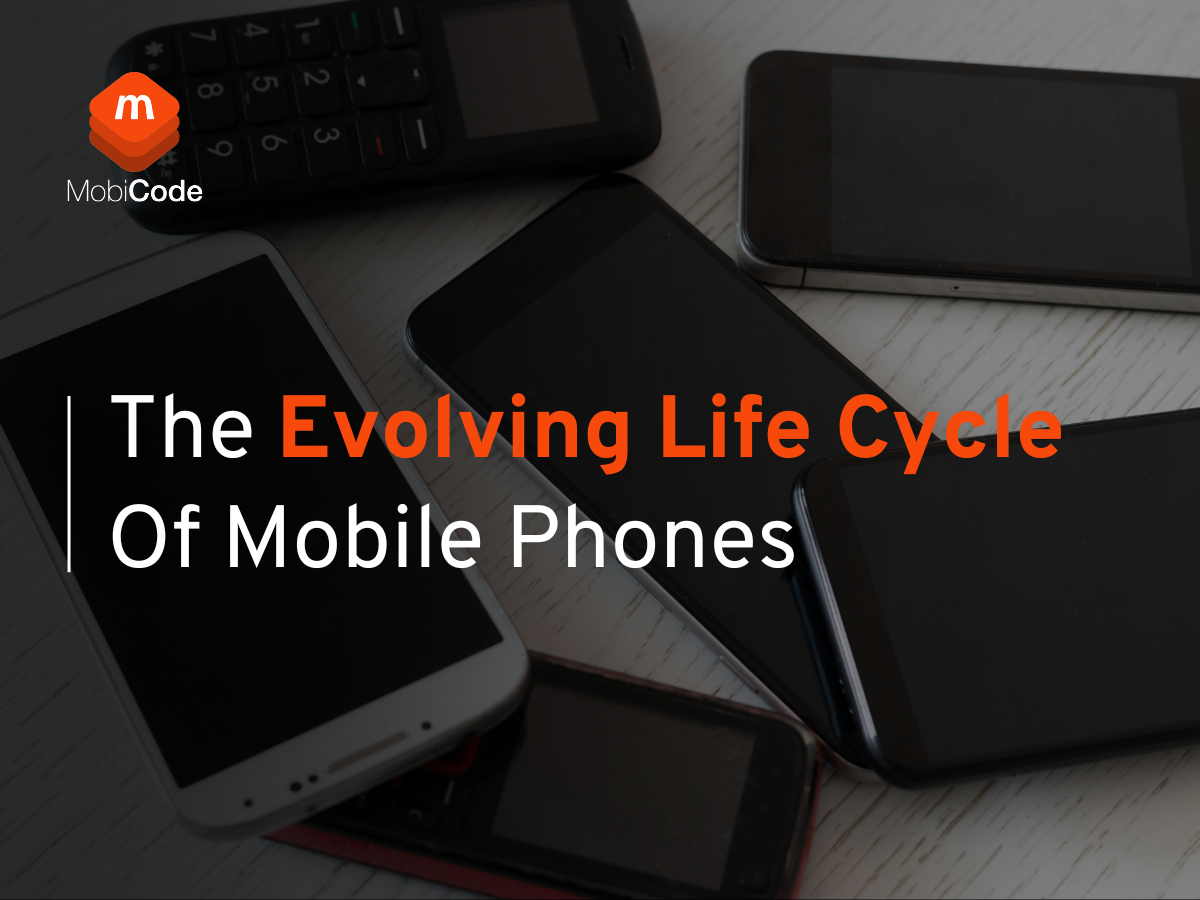

Banner

Latest News

In an era where innovation is often synonymous with the latest and greatest, the mobile phone industry is experiencing an unexpected transformation. The once-familiar scenes of eager consumers lining up on release days, clamouring for the newest “Hero” handset, are becoming a rarity. The frenzy of unboxing videos and the chorus of awe and excitement accompanying each new launch is fading. Today, the narrative is changing, marked by a notable shift in user behaviour, technological advancements, and a growing consciousness of environmental sustainability. Let’s explore this changing life cycle in the world of mobile phones.
Remember when getting the latest smartphone every year felt almost exciting? Those days are fading. Recent studies show that users now upgrade their phones every 3 to 3.5 years. This change is attributed to several factors: the rising costs of new models and the economic environment, the seemingly minor upgrades they offer, and the proliferation of affordable repairs of current devices.
The ‘Right to Repair‘ movement is rapidly gaining momentum, leading to a shift in the consumer electronics industry. At its core, the movement advocates for legislation that grants access to the necessary tools, parts, and information to repair electronic devices—primarily mobile phones.
This initiative isn’t just about consumer rights; it’s an environmental imperative. The ability to repair and extend the life of a device directly counters the throwaway culture that contributes to electronic waste. Repairability leads to longer device lifespans, reducing the demand for raw materials and the energy consumed in manufacturing new products.
Economically, ‘Right to Repair’ laws encourage competition by allowing independent repair shops to flourish. This competition can lead to lower prices and more consumer options, stimulate local economies and support small businesses.
However, this shift challenges electronic manufacturers’ traditional business models. Many have built ecosystems based on regular upgrades and tightly controlled repair networks. These manufacturers argue that open repair policies could compromise device security and integrity.
Despite resistance, legislative progress is being made. The Federal Trade Commission has signalled support for the right to repair in the United States. At the same time, the European Union has passed measures requiring manufacturers to make appliances longer-lasting and more accessible to repair.
As the movement gains increased traction, the industry is at a crossroads. Will manufacturers adapt by offering more durable, repair-friendly designs, or will they fight to maintain the status quo? Either way, the ‘Right to Repair’ movement is redefining what ownership means in the digital age, giving consumers the right to decide the fate of their devices.
The once-thrilling anticipation of new smartphone releases has dwindled in recent years as the industry faces a stagnation in noticeable upgrades. For instance, Apple’s iPhone, a long-time leader in smartphone innovation, has not fundamentally changed its functionality since the introduction of the Dynamic Island feature. Before that, the last significant shift was the iPhone X in 2017, which removed the home button to create a sleeker, screen-led experience. While these innovations were groundbreaking, the more recent updates have been incremental, offering changes that might not significantly impact the average user’s daily interaction with their device.
Most recent updates focus on improving key areas such as the processor, camera, screen capabilities, and materials used. While these enhancements may excite power users who push their devices to the limits, they offer little to entice the average consumer. Even the aesthetics of new models have remained essentially unchanged, with designs staying consistent since the launch of the iPhone 12. This trend is mirrored in other major brands, such as Samsung’s Galaxy Z Flip and Fold series, where recent releases have brought few notable improvements for the average user compared to previous models.
This stagnation highlights a broader trend: the technological gap between brands is narrowing. Features once exclusive to Apple or Android devices now appear across both platforms, reducing the incentive for consumers to choose one over the other based on unique functionalities. As software updates are made available for older models, users of previous generations can enjoy new features without needing to upgrade their hardware.
This shift signals a decline in consumer excitement over new devices as the market becomes saturated with phones that look similar and offer only minor functional improvements. The allure of having the latest and greatest is fading, leaving manufacturers with the challenge of reigniting consumer interest in an industry where innovation is slowing, and differentiation is more challenging to achieve.
The dawn of artificial intelligence in mobile phones has the potential to push beyond just another rarely-used feature upgrade—it has the potential to transform how we interact with our devices and turn them into a dedicated personal assistant device. As AI integration becomes increasingly refined, with specific Android devices pushing for more incorporated AI functionality, we stand on the precipice of a new era in mobile technology. But the question looms: will this indicate the arrival of a new “hero” device for the masses?
AI is not new to smartphones, but its capabilities are evolving beyond voice assistants and camera enhancements. With the potential to learn user preferences, enhance security, optimise battery life, and even anticipate needs, AI could rework the premise of the personal device experience and transform it into a dedicated AI-powered personal assistant.
Some companies, such as Humane and Rabbit, have tried to tackle the task of creating a completely AI-focused device. These devices are not without flaws but present exciting concepts on how AI-powered technology could replace or empower the modern smartphone, mainly the Rabbit device, which is most likely the closest representation of how an AI-powered smartphone could look. The Rabbit R1 device promises a notable upgrade to the existing voice assistants natively engrained into mobile phones, such as Siri and Bixby, as the Rabbit R1 can directly interact with the apps we use daily, such as Spotify, Uber Eats and many more that up until this point have been solely manual experiences. While the Rabbit R1 is far from a finished, polished product as of right now, the capability it promises could be the start of a new shift into how our devices can help our daily lives as personal assistance devices.
There’s a palpable buzz around AI’s promise in the mobile sector. Consumers are eager for a device that doesn’t just respond but predicts and adapts. AI’s potential in mobile phones is vast, but creating a “hero” device that shifts standards like the original iPhone depends on execution. It’s about harmonising hardware, software, and AI into a seamless, intuitive experience that acts as a dedicated personal assistance device.
To rise to “hero” status, the next generation of AI-powered phones must offer transformative features that provide more functionality beyond simple singular tasks that the current AI-enhanced phones offer, such as translation features, note generation or image alteration. The latest feature that demonstrates the capabilities of a proper AI-enabled device is Google’s Circle to Search. This AI function significantly enhances how we perform an essential action like searching. Previously, if you wished to search for something you saw in a video, you would have to close your currently open app and open a browser tab to search manually. Now, you can search for terms, images, and other content directly within the app you are using.
As manufacturers race to integrate AI, the industry watches with bated breath. Will the next model in your pocket be a true AI powerhouse? Time will tell, but one thing is certain—the potential for AI in mobile phones to create a hero device is undeniable. It’s not just about the next big thing; it’s about the next intelligent thing. The hero device will not just be smart; it will be insightful and turn your device into a personal assistant.
Copyright © 2024 · All Rights Reserved · MobiCode